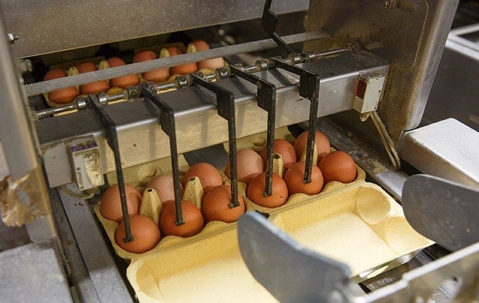Most Wichita businesses have periods where their income substantially increases about the same time every year. For instance, a beach resort is likely to have an annual boom around the spring and summer. These intervals are exciting for any entrepreneur. However, pests have peak seasons too, and they can disrupt the good fortune. It’s important that entrepreneurs in the food industry understand what insects and creatures are most active during the spring. They will then be able to prepare accordingly. Pests that target or spoil food can wreck the reputation and viability of an establishment. Customers and workers can be injured or become ill, products can be destroyed, and there could be a financial loss. Learn now how you can avoid a disaster with Pinnacle Solutions.
What Pests Are Common in Businesses During Spring? What Are the Risks?
House mice, German cockroaches, and Indian meal moths are prevalent in the area. While these pests are busy year-round, the springtime can bring a larger influx. House mice have the name that they do because they often violate dwellings. The vermin are 7 inches long and have short hair that’s gray, black, or brown. They can easily get through foundational holes as small as ½ of an inch around. Preferring to nest in damp and dark spots, they’ll reside in places like structural voids, cabinets, and basements. To file their teeth, they’ll chew on piping, wires, walls, and more. Having parasites in their fur and bacteria in their waste, these animals can contaminate food and surfaces. Mice have been linked to salmonella, hantavirus, and lymphocytic choriomeningitis.
Similar to house mice, German cockroaches harbor illness-causing germs. It’s on their skin and in their urine, feces, and saliva. It doesn’t help that they spend inordinate amounts of time in filthy settings, like sewers. They have leg spines that stick to things. Therefore, they too can taint cuisine and surfaces. The adult bugs are brown or tan and 0.51 to 0.62 of an inch long.
Indian meal moths are 0.37 of an inch long, with a wingspan of 0.62 of an inch. Their bodies are a mix of gray, brown, and bronze. These flying insects will lay eggs inside of goods while they’re on the packaging and distribution line. The pink, cream, or yellow-green larvae will begin feeding right away. Contents will be polluted with the webbing and feces of these pests. Flavor alteration and molding may occur. Affected food should be thrown away at once. Some signs you may see of a mouse, cockroach, and moth infestation are:
- Finding eggs, droppings, footprints, and/or teeth marks
- Hearing rustling, squeaking, or scratching
- Noticing musty or foul odors that are persistent
- Discovering items suddenly tattered
- Seeing these nocturnal or often hidden specimens during the day
How Can Businesses Prevent Spring Pests?
Take these actions to reduce the chances of spring pest invasion:
- Decrease clutter
- Keep kitchens, pantries, cabinets, vents, gutters, and drains thoroughly clean
- Sweep, vacuum and mop regularly
- Put food and garbage in secure canisters
- Immediately repair leaks and moisture problems
- Seal holes in foundations, doors, windows, utilities, and appliances
- Make sure screens and sweeps are intact
- Routinely trim grass and greenery
- Distance plants from the property
- Inspect packaged materials for damage before using it
What Can Pinnacle Solutions Do About Spring Pests?
Commercial properties are our main focus at Pinnacle Solutions. Our Ready 365 program is designed to assist audited distribution and processing facilities in maintaining food safety and proper pest control. Modern protocols, techniques, and treatments will be employed to ensure insects and creatures don’t make your facility their habitat. Our expert staff is available at all hours, and emergency visits are available. Call us today at Pinnacle Solutions for a free consultation!

